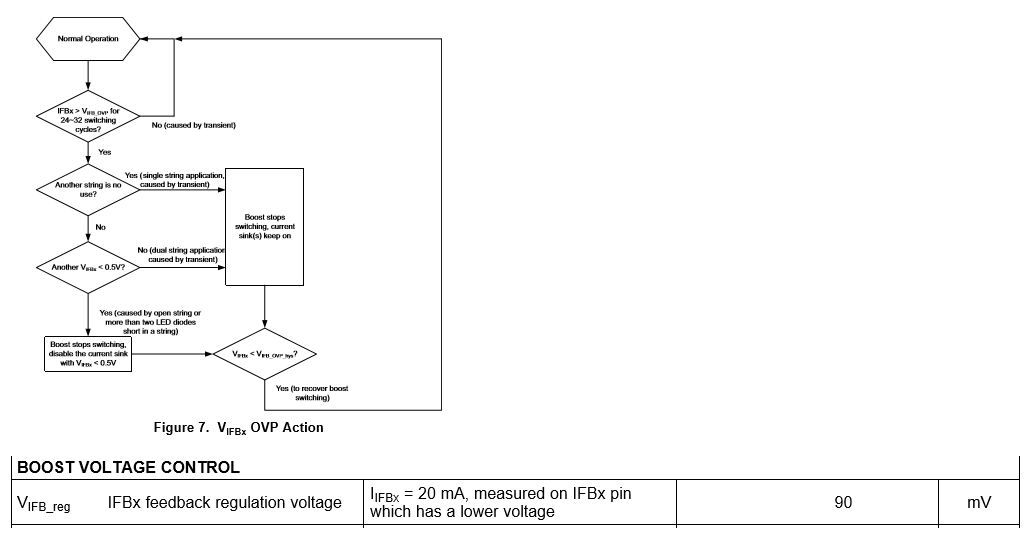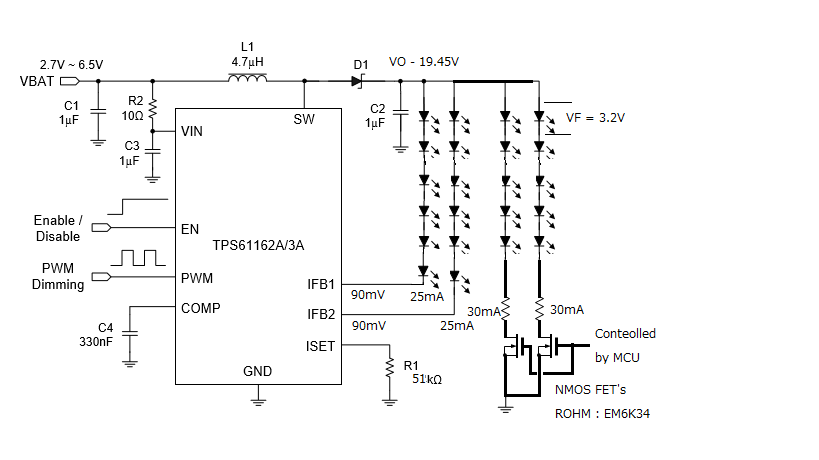Other Parts Discussed in Thread: LM36274
Dear, Sir.
My customer is considering to realize 1 to 2 seconds flashing applying TPS61193A.
The flashing will be executed after TPS61193A start-up.
VIN condition & brief configuration is as below.
Maybe, enough headroom voltage must be maintained.
They would put the additional resistor & NMOSFET to be prepared addition 30mA paths.
TPS61193A has unused pin function to connect IFBx to GND, so I am confusing now.
Please give your advice,
This kind of usage is possible or not?
Is there any concern & bottle-neck under this kind of usage?
Best Regards,
H. Sakai




